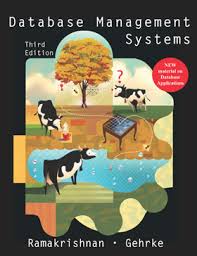White Paper: Mastering Database Management Systems with Ramakrishna's 3rd Edition
Abstract
Database Management Systems (DBMS) are the backbone of modern information systems, enabling efficient data storage, retrieval, and manipulation. Ramakrishna's 3rd Edition provides a comprehensive guide to the fundamentals of DBMS, covering relational database design, SQL, transaction management, and database performance tuning. This white paper explores the key concepts presented in the book and highlights their significance in today's data-driven world.
Introduction
In today's data-driven world, effective database management is essential for organizations of all sizes. Ramakrishna's 3rd Edition offers a deep dive into the core concepts of DBMS, providing readers with a solid foundation for understanding and utilizing database technologies.
Key Concepts Covered in Ramakrishna's 3rd Edition
- Database System Concepts:
- Data Models: Understand the different data models, including the hierarchical, network, and relational models.
- Database Design: Learn how to design efficient and effective database schemas using normalization techniques.
- Data Independence: Explore the concepts of physical and logical data independence.
- Data Security and Integrity: Implement security measures to protect sensitive data and ensure data integrity.
- SQL:
- Data Definition Language (DDL): Learn how to create, modify, and delete database objects like tables, indexes, and views.
- Data Manipulation Language (DML): Master the commands for inserting, updating, deleting, and querying data.
- Data Control Language (DCL): Understand how to control access to database objects and manage user privileges.
- Transaction Management:
- ACID Properties: Learn about the four essential properties of transactions: atomicity, consistency, isolation, and durability.
- Concurrency Control: Understand techniques for managing concurrent access to data, such as locking and timestamping.
- Recovery Techniques: Explore methods for recovering from system failures and data corruption.
- Database Performance Tuning:
- Query Optimization: Learn how to write efficient SQL queries to improve query performance.
- Indexing: Understand the role of indexes in speeding up data retrieval.
- Database Tuning: Explore techniques for tuning database parameters and configurations to optimize performance.
Practical Applications of Database Management Systems
Database management systems are used in a wide range of applications, including:
- E-commerce: Storing product information, customer data, and order history.
- Banking: Managing customer accounts, transactions, and financial data.
- Healthcare: Storing patient records, medical history, and billing information.
- Social Media: Managing user profiles, posts, and interactions.
- Data Warehousing and Business Intelligence: Analyzing large datasets to extract valuable insights.
Conclusion
Ramakrishna's 3rd Edition provides an invaluable resource for anyone interested in mastering database management systems. By understanding the fundamental concepts and practical techniques covered in the book, you can effectively design, implement, and manage databases to support your organization's data-driven initiatives.
References
- Ramakrishna, R. (2023). Database Management Systems. McGraw-Hill Education.
- C. J. Date, A Guide to the SQL Standard, Addison-Wesley Professional, 2003.
By studying this book and applying the knowledge gained, you can become a proficient database administrator and contribute to the success of your organization.



